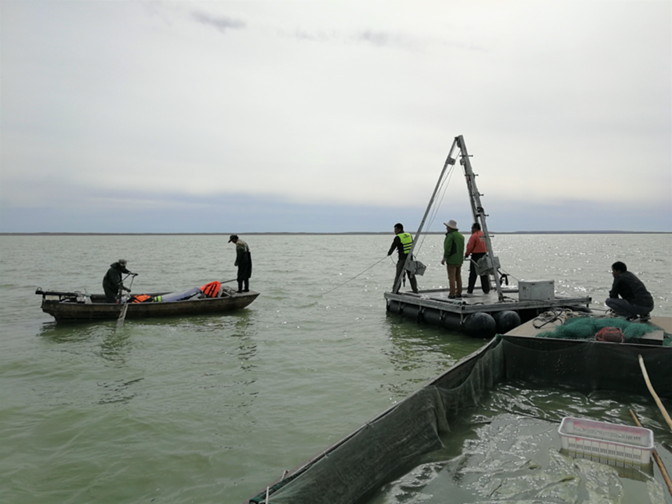Chagan Nur, a lake located in the arid and semi-arid transition zone at the fringe oft he monsoon, is the sixth-largest lake in Inner Mongolia. It is very sensitive to the climate change of EASM. Professor Li Guoqiang's team carried out geomorphology survey and lake core drilling inChagan Nur and reconstructed a 12,000 years history of the lake's water level change. They found that the lakes at the fringe of the monsoon formed a high-water level 15 to 12 m above the modern lake level,and then the lake's water level continued to fall. Also, the fringe of the monsoon (Chagan Nur basin) has been dominated by desert and prairie vegetation for the past 12,000 years, with annual precipitation fluctuating between 280~420 mm, a typical semi-arid environment.
The team quantitatively reconstructed the precipitation change, vegetation, and environmental change characteristics of the arid and semi-arid transition region in northern China over the past 12,000 years. The variation regularity and driving mechanisms of EASM precipitation are discussed. It provides a basis for understanding the climate variation regularity of the EASM on different time scales and predicting future climate change.
The research, ‘Quantitative precipitation reconstructions from Chagan Nur revealed the lag response of East Asian summer monsoon precipitation to summer insolation during the Holocene in arid northern China’ was published online on May 28 in the journal Quaternary Science Reviews. Lanzhou University is the first labeling institute. Professor Li Guoqiang is the first author and the first corresponding author of this paper, and associate professor Jin Ming is the second corresponding author.In addition, associate professors Zhao Wenwei and Chen Chunzhu from Nantong University, Dr. Cao Xianyong from the Institute of Tibetan Plateau Research, Chinese Academy of Sciences, and Engineer Zhang Yunian from the Gansu Institute of Sand Control participated in the study. This study was supported by the National Natural Science Foundation of China and the Second Tibetan Plateau Scientific Expedition and Research.

Members of the research team are drilling the lake core in Chagan Nur

Reconstruction results of annual precipitation changes over the past 12,000 years in Chagan Nur basin at the fringe of the EASM region